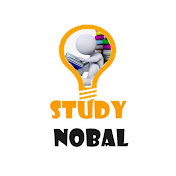Dr. Hargovind Khurana Biography
Date of birth: 9 January 1922
Place of birth: Raipur, Punjab (currently in Pakistan)
Died: November 9, 2011 (USA)
Dr. Hargovind Khurana is one of the famous scientists born in India.
He was born on January 6, 19 in Raipur (now Pakistan) in the Indian state of Punjab (now under British rule) to an ordinary family.
Hargovind was the youngest in a family of four brothers and one sister.
He completed his primary education at Multan.
Hargovinde did his primary studies at DAV, Multan. Done at school.
After that B.Sc. and M.Sc. Degree from Punjab University, Lahore.
After struggling with the normal economic situation, his father started trying to give him more education. As a result of his father's efforts, he studied diligently.
E. from Punjab University. Q. He graduated in the year 19.
Then e. Q. In the year 19, he also did post-graduate studies in Chemistry and Biochemistry.
After graduating, he went on to study at the University of Liverpool in England.
From here he earned a Ph.D. D. degree.
He went to England on a government scholarship and received his Ph.D. in 1948 from the University of Liverpool. Received.
In 1949, he did a one-year fellowship at the Swiss Federal Institute of Technology in Zurich, Switzerland.
E. Q. In the 19th year, he began research at the University of British Columbia, as well as at the University of Zurich and Cambridge University.
He became famous for his important research on the role of nucleotides in protein synthesis.
H then worked with the team to make progress in the field of research, proving that biological languages are the same for all living organisms.
For this research work e. S. In the year 19, he was awarded the Nobel Prize in Physics.
E. Q. In 190, he joined the Massachusetts Institute of Technology in the United States as a professor of biology and chemistry.
He returned to India for a short time in 1949 but could not find a suitable job here and moved back to England in 1950.
This time he worked with Sir Alexander Todd and Professor Kenner at Cambridge University for two years
It was during this time that his interest in the functioning of DNA and RNA was aroused.
The origins of his world-renowned research were laid at Cambridge University with the encouragement and guidance of these professors.
In 1952, he was invited to work by Dr. Gordon Labor from the University of British Columbia in Vancouver, Canada.
He lived in Vancouver from 1952 to 1960. During this time his study of nucleic acids became more in-depth. His interest in the subject grew because of many inspiring colleagues.
In 190 he went to the University of Wisconsin in the United States. After moving to the United States, they stayed there and obtained citizenship
Dr. Khurana arrived at the University of Wisconsin in the United States in 1960 and remained there until 1970.
During this time his DNA and RNA research progressed.
He became an American citizen in 1966.
In 1968 he was awarded the Nobel Prize in Medicine for his work on nucleotide mechanisms, along with two other scientists, Nirenberg and Hole.
Dr. Khurana joined the Massachusetts Institute of Technology as a professor in 1971 and worked there until his retirement in 2007.
Medical Research:
Hargovind Khurana did research on how the cells of the body work. Each cell has a nucleus containing nucleotides that contain the genetic code of that cell. The structure of the nucleotide manages what type of amino acid the cell makes. These amino acids make proteins that are essential for any living thing. Dr. Hargovind Khurana studied the microscopic structure of nucleotides and discovered how they command cells to make proteins or not. This was the most basic requirement for any biological substance. Dr. Khurana's research made it possible to create any living cell.
Their discovery led to the creation of animals through cloning. Dr. Hargovind Khurana artificially produced yeast using the same method in 1970. This fungus made it possible for scientists to make any protein, for example, insulin or growth hormone. Instead of relying on animals, this method made it possible to make pure and unlimited amounts of such hormones. These hormones made it possible to cure the diseases of millions of people. Dr. Khurana's discovery led to the introduction, development and application of scientific disciplines such as genetic engineering and biotechnology. The simple and successful cure for many ailments is due to this discovery of Dr. Khurana.
Din vishes Quiz
Personal life:
Dr. Khurana was married to Esther Elizabeth Siebler in 1952. Esther was of Swiss descent and they had two daughters, Julia, Emily, and a son, Davidroy. Esther gave Dr. Khurana courage and warmth during difficult times.
Indian Relations:
Dr. Hargovind Khurana was awarded the Padma Vibhushan by the Government of India in recognition of his unprecedented contribution to medical science. The most important thing is that Dr. Hargovind Khurana's rare medical achievements will be remembered for the welfare of mankind.
Received the Nobel Prize in Science in 1968 with Marshall Nirenberg and Robert Hurley for their analysis of the genetic code.
Dr. Khurana and his team proved that the biological language that applies equally to all living structures can be identified by three words. Dr. Khurana has done a lot of research on chromosomes. At present the synthetic jeans that can be prepared in the laboratory are Dr. Thanks to Khurana.
Awarded the Nobel Prize in Physiology or Medicine in 1968. Marshall W. for research. Nirenberg and Robert W. Along with Holly, nucleotides in nucleic acids containing the genetic code of the cell, helped to show how proteins regulate cell synthesis.
On January 9, 2018, Google released a doodle in his honor on his 96th birthday.



0 Comments